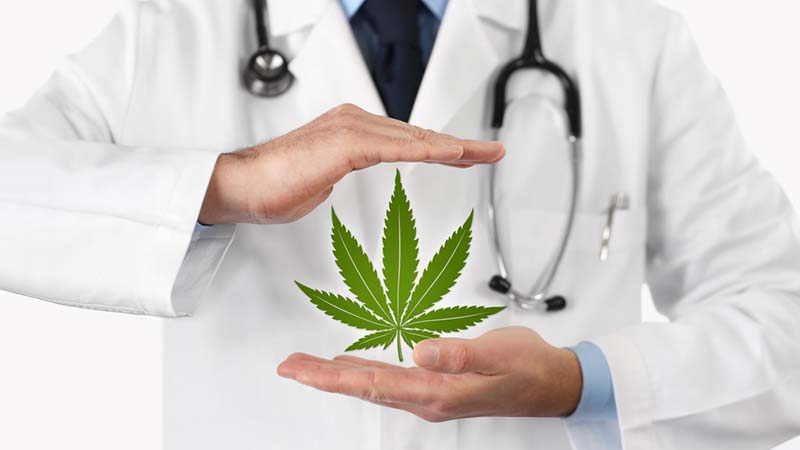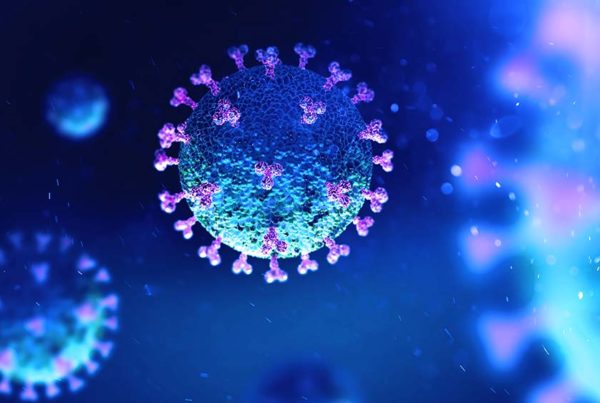
The hype, high, and a dose of reality, cannabis has been debated, enjoyed, politicized and killed over, like many other human indulgences; and it’s been used medically, recreationally and spiritually from the beginning of history.
The legalization and acceptance of cannabis use for both medical and recreational purposes has become a hot topic in the United States and other countries in recent years, yet many people still seem puzzled about this medicinal plant, its use and potential health benefits.
Throughout my career, I’ve received questions about marijuana — is cannabis good or bad; therapeutic or not? A surprising number of people who are health-conscious or athletic have asked about it too. This is no surprise, considering that a shocking number of runners and other athletes smoke cigarettes. Other health practitioners also ask, and receive, many questions about cannabis.
The wild popularity of the weed worldwide has also ignited significant scientific research into the health effect of cannabis. And the approval of medical marijuana in many locales, in some cases even for children, has sparked increased interest. At this point, the education of consumers, rather than scare tactics, has become increasingly important.
It’s no surprise that Colorado, the “Rocky Mountain high” state, and clearly home to the healthiest U.S. population, was one of the first to legalize pot for medical use, then extended this to recreational use. The state legislature is now in the process of approving a medical marijuana card for minor children with autism.
As a grade schooler in the 1950s, we were made to watch Reefer Madness, a fictionalized American propaganda film made in the 1930s. There was a lot of laughing. These kinds of promos have long gone by, along with doctor ads recommending cigarette smoking. Today, the budding marijuana industry spends many millions of dollars advertising its products.
The serious side of cannabis is simple. It’s cheap and easy to grow, with active ingredients primarily in the flowers (buds) with lower amounts in the leaves (hashish is the concentrated form). And, like many other natural plants, marijuana contains thousands of phytochemicals, some of which, as scientists continue finding, are significantly health-promoting.
Cannabis is a hot product, with more than half the United States, as well as Washington, D.C., allowing the use of some form of it. Whole countries have approved it too, the most recent one being Canada. Other areas have essentially decriminalized it, in short because the link between personal marijuana use and crime was never demonstrated. From the tightly controlled medical marijuana to the home-grown recreational versions, the politics of pot has been swayed by, no surprise, money.
Billions of dollars are being generated by governments from marijuana taxes, and it will be only a short time before most if not all governments get on the cannabis bandwagon. Wall Street is way ahead, with many public cannabis companies, some with market caps also in the billions.
How You Get High
All humans are born with receptors in the brain (and throughout the body) for the active ingredients in marijuana. Consume some cannabis — either by ingesting, smoking or vaping, or even from smelling it through second-hand smoke — and these receptors are activated. You may not feel high unless the dose is adequate, which varies from person to person.
THC & CBD
Among the active compounds in cannabis, called cannabinoids, are THC (tetrahydrocannabinol) and CBD (cannabidiol), the two most commonly researched, discussed and used phytochemicals.
- THC produces psychoactive effects — the getting high part. It also has various therapeutic effects.
- CBD does not produce a high but also has therapeutic effects.
THC is heat stable, the reason it’s often smoked to trigger a high, perhaps the primary reason most people use it. CBD is unstable, so smoking or otherwise heating it too much can destroy much of its therapeutic capacity. For those seeking high levels of CBD, it’s best to consider high-CBD strains of the plant that have little or no THC, the most popular one called Charlotte’s Web.
If you want all potential benefits from cannabis, eat it. When consumed, many of its natural compounds are easily absorbed. Cannabis is sometimes infused in coconut or other fat (THC is fat-soluble) for direct consumption, and sublingual preparations are popular too. Oils also can be used in food recipes, although using it raw results in more therapeutic botanicals, as seen with CBD. New processes now allow cannabis to be infused in beverages as well — but beware sugary drinks! Balms and creams for topical use are also popular.
There is an important distinction between some CBD products. CBD can be extracted from any cannabis plant. However, from a legal basis CBD from hemp containing 0.3 percent THC or less is legal under the 2018 Farm Bill for sale in all U.S. states and can be shipped across state lines. CBD products from marijuana plants containing more than 0.3 percent THC are limited to states where marijuana is legal. There is some scientific evidence that CBD is more therapeutic when combined with certain levels of THC.
High Hype
It’s always best to avoid the hype. But walk into a legal pot shop and you’ll be hit with it. There are now thousands of these stores in the U.S. alone, from LA’s Coughy Shop and Uncle Herb’s in Alaska, to Oregon’s Grateful Meds and Electric Lettuce.
There are hundreds of cannabis strains that range in exotic names like the old Acapulco Gold, along with Afgoo, Blue Dream and Cinderella 99, aka C99, or simply “Cindy,” all the way to Zkittlez. While these all look, feel and smell a bit different, beware of the hype — it’s all about dosage. Like wine, where nose, taste and visual evaluation in the glass is an exciting part of the ritual, the difference in dose between a fine Bordeaux and boxed wine is nothing since it all has the same alcohol content — standards used throughout the alcohol industry.
Herein lies one of the key cannabis factors that led to legal acceptance — standardization. Unlike most herbs, where you won’t find dosages of the active ingredients listed on the label, purchasing pot does come with an accurate amount of the active ingredient. While it’s fun to wander around the modern pot shops, whether you want high THC or CBD, or both, if you’re looking for the biggest bang for your buck, simply compare dosages.
Marijuana is often compared to another popular drug, alcohol. In short, beyond moderation, alcohol is significantly more dangerous and a serious global health problem. Alcohol may be an unfair comparison as it’s the most dangerous drug. This is not the case with cannabis, although, like other drugs, it does have potential dangers.
The Bad
- Smoking anything is harmful primarily because you’re inhaling very hot smoke. Respiratory symptoms such as coughing, wheezing and other reactions similar to those in tobacco smokers can obviously be unhealthy (albeit much less than cigarettes which have many additives and are inhaled throughout the day, unlike cannabis).
- While technically not addicting like alcohol or tobacco, extreme pot use (versus medical or recreational) is abuse. Smoking all day long, for example, this heavy use is usually associated with an obsession, and can impair memory and learning.
- THC can impair driving and operating other machinery, not unlike with alcohol and many prescription and over-the-counter drugs.
- Using a vaporizer (which releases the THC molecules from the plant), and is usually associated with lower temperatures, results in a higher availability of THC, so you could get more high than normal; this is important to know for people with little or no prior cannabis exposure. Vaping also destroys much of the CBD. (Smoking through a water pipe or bong cools the smoke as it goes through the water, although this could still deactivate much of the CBD.)
- Edible products containing cannabis are very popular, but are mostly infused junk-food. Producers add THC and/or CBD to candy, liquids, bars and other sugary items.
- Some people who get high crave sweets, which may be an indication of a pre-existing blood sugar instability. The result is the long-known munchies, sometimes leading to a binge-like hunger for sweets and other junk.
- Being high on pot can also bring out mental-emotional instability in vulnerable people, such as anxiety or paranoia. While cannabis is often used to relieve stress for some, it can cause others to feel anxious or stressed, a good enough reason to avoid it.
- Obtaining cannabis from an unknown source can be risky or illegal; possessing it or growing your own may be a crime unless local laws allow it or you have a medical prescription. If it’s legal for you to use, there are still laws about obtaining it from a licensed source (not unlike bootleg liquor or cigarettes).
The In-Between
Certainly, there is a strong pharmaceutical connection here — many prescription and over-the-counter drugs had their origins in nature. While there is still a U.S. federal ban on cannabis, likewise in other countries, there are FDA-approved medications containing cannabinoid chemicals in pill form (Epidiolex, dronabinol and nabilone). Look for big Pharma, which already is a huge source of cannabis research dollars, to essentially, eventually, own a big share of the pot market, not unlike their production/ownership of most nutritional ingredients. (Big Tobacco and Alcohol are lurking out there too, waiting to jump on the canna-bandwagon.)
While hot smoke is dangerous to inhale, a JAMA study of over 5,000 people aged 18 to 30 showed that on average, marijuana users toked 2-3 times a month, while tobacco users smoked on average eight cigarettes a day. The cannabis smokers, however, did not damage their lungs or impair lung function, like the cigarette smokers did. Low to moderate pot users actually showed increased lung capacity compared to nonsmoker controls in the study. This is not a reason to smoke cannabis when safer means are available, but it may be some consolation for those former users who smoked. However, heavier/frequent pot smokers can do damage and/or impair the lungs.
Cannabis has been an effective treatment for the problem of poor appetite in many people. However, while marijuana does not cause weight loss, a large study of 52,000 people showed that those who smoked pot at least three times a week, compared with those who abstain, weighed significantly less and were less likely to be obese.
Cannabis is highly detectable through urine and saliva tests (and hair analysis), and perhaps soon by breathalyzer. Tests can be positive for weeks or even months after use, depending on the quantity and frequency of THC ingested, an individual’s metabolism, and the type of test. Though the psychoactive effect is long gone the person may still test positive. This can be a problem in many fields of employment, including healthcare, professional sports, driving or operating equipment, and for other reasons.
The Good
Science has demonstrated various other health benefits used as the basis for prescribing marijuana as medicine.
- The strongest research on cannabis is for use as a treatment for chronic pain (experienced by more than half the population). While cannabis has anti-inflammatory effects, it may not treat the cause of the pain.
- Other pot prescriptions are approved for a long list of specific conditions, depending on the locale. These include cancer, glaucoma, autism, intestinal disease, osteoporosis, migraine, fibromyalgia, incontinence, eating disorders, addiction, even bacterial infections.
- I previously highlighted the importance of the brain’s endocannabinoid dopamine system in managing physical, biochemical and mental-emotional stress. LINK. Cannabis may have its most potent effect here.
- Because of the neuroprotective effect on the brain, cannabis as a therapy has been linked to various beneficial neurological conditions, including multiple sclerosis, Alzheimer’s and Parkinson’s diseases, epilepsy/seizures, PTSD, schizophrenia, Tourette’s syndrome and others.
- Anecdotal effects of THC include the ability to better socialize, escape writer’s block, increase creativity and relaxation, and more. Steve Jobs reportedly said, “The best way I would describe the effect of the marijuana and the hashish is that it would make me relaxed and creative.” Along with the feeling of calm and euphoria, the release of dopamine can increase the ability to make conscious connections between seemingly unrelated concepts (hyper-priming), leading conversations with colleagues that run from one topic to another at a fast pace (sometimes leading to an aha! moment), along with dehabituation, the process of looking at something familiar with fresh eyes.
As one of the newer, more exciting fields in health research, medical marijuana is appearing in the most prestigious scientific publications, such as the New England Journal of Medicine and Journal of the American Medical Association, and the most traditional of medical establishments, including the Mayo Clinic. These and many other scientific journals have written about and published high-quality research on the topic, especially its many potential benefits.
Of course, with medical marijuana, cannabis use by the patient should be guided by the practitioner. Most importantly, understand that cannabis won’t magically make your body work better if your lifestyle habits are not healthy first. It’s especially important to focus on eating well.








